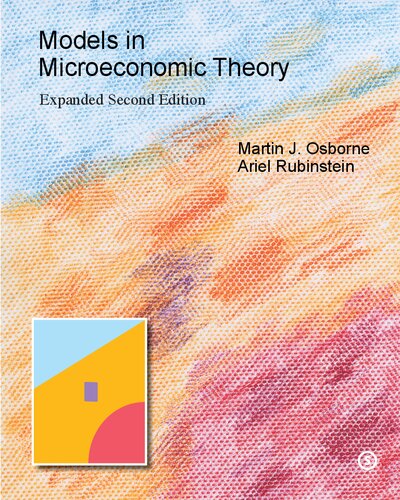

Most ebook files are in PDF format, so you can easily read them using various software such as Foxit Reader or directly on the Google Chrome browser.
Some ebook files are released by publishers in other formats such as .awz, .mobi, .epub, .fb2, etc. You may need to install specific software to read these formats on mobile/PC, such as Calibre.
Please read the tutorial at this link: https://ebookbell.com/faq
We offer FREE conversion to the popular formats you request; however, this may take some time. Therefore, right after payment, please email us, and we will try to provide the service as quickly as possible.
For some exceptional file formats or broken links (if any), please refrain from opening any disputes. Instead, email us first, and we will try to assist within a maximum of 6 hours.
EbookBell Team

4.4
92 reviewsModels in Microeconomic Theory covers basic models in current microeconomic theory. Part I (Chapters 1-7) presents models of an economic agent, discussing abstract models of preferences, choice, and decision making under uncertainty, before turning to models of the consumer, the producer, and monopoly. Part II (Chapters 8-14) introduces the concept of equilibrium, beginning, unconventionally, with the models of the jungle and an economy with indivisible goods, and continuing with models of an exchange economy, equilibrium with rational expectations, and an economy with asymmetric information. Part III (Chapters 15-16) provides an introduction to game theory, covering strategic and extensive games and the concepts of Nash equilibrium and subgame perfect equilibrium. Part IV (Chapters 17-20) gives a taste of the topics of mechanism design, matching, the axiomatic analysis of economic systems, and social choice.
The book focuses on the concepts of model and equilibrium. It states models and results precisely, and provides proofs for all results. It uses only elementary mathematics (with almost no calculus), although many of the proofs involve sustained logical arguments. It includes about 150 exercises.
With its formal but accessible style, this textbook is designed for undergraduate students of microeconomics at intermediate and advanced levels.